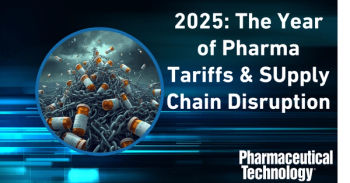
Sustainability in the packaging supply chain
Michael Rubenstein, Chief Growth and Innovation Officer at Alcan Packaging, talks about applying a philosophy of sustainability to the pharmaceutical packaging supply chain.
Michael Rubenstein, Chief Growth and Innovation Officer at Alcan Packaging, talks about applying a philosophy of sustainability to the pharmaceutical packaging supply chain.
Q1: How are the materials used in Alcan's pharmaceutical packaging environmentally-friendly?
Actually, at Alcan Packaging we don’t talk about environmentally-friendly materials or environmentally-friendly packaging there is no such thing as being 'environmentally friendly'. However, different packaging solutions have different environmental performances and we are constantly striving to improve our existing products as well as to develop new products that reduce the environmental footprint. This also includes benefits the package provides for the environmental performance of the packaged product itself; for example, by reducing spoilage and optimizing product use. In addition, aspects such as compliance need to be considered when looking at sustainability because improved compliance brings safety and health benefits for the consumer. With our three-pillar view we are addressing the complete spectrum of sustainability, from environmental to social aspects, as well as the long-term economic implications for the supply chain and society in general. That being said, we are, of course, always looking at material alternatives, but only in the context of the packaging-product life cycle with the aim of choosing the overall best material for a given job.
Q2: Many companies in the pharmaceutical industry do not (yet) focus on the environmental performance of packaging and biodegradability. Why do you think this is?
Packaging is designed to do a job, such as protecting and delivering the product and one needs to find the best material for a given job. There are no silver bullets for more sustainable packaging it all depends on the context. Biodegradable and renewable materials, for instance, are options, which we are developing in our Value Innovation Centers in Europe, US, and Asia, but these materials are not intrinsically more environmentally friendly than other materials. Again, it depends on the job the material has to do and the amount of material needed to deliver a certain function, as well as the environmental impacts of the production, usage and waste management of the products. For instance, if there are no composting facilities available where the consumer can dispose off the package after use, the function 'biodegradability' cannot be used. Apart from this, one has to see that most biodegradable materials are intrinsically not as stable and do not provide the same barrier functions as, for example, aluminum foil or fossil-based plastic films. In many cases, biodegradable materials are just not (yet) fit for purpose in high-demanding applications in the pharmaceutical industry. It is important is to focus on actual performance and not on the perception of sustainability alone. While sustainability aspects in pharmaceutical packaging are often not very visible, there are definitely some very efficient systems on the market, as well as new developments in the pipeline.
Q3: As well as looking at the materials used in packaging solutions, how can a pharmaceutical company apply a sustainability philosophy to the entire packaging lifecycle?
As already mentioned, we are taking a full and integrated life cycle view that includes our supply chain, our operations, transport, further manufacturing, product use and disposal. We have implemented our 4P approach, which circles around implementing sustainability for our products (total life cycle), our plants (optimizing our operations), people (internal awareness raising and education), and partnerships (working with our suppliers and customers to produce value adding products with minimal footprint and optimized social and economic performance). This philosophy entails the steps a) measure (sustainability performance), b) evolve (our products), and c) explore (new solutions). Obviously the measurement element is critical in the process. To make this operational we have implemented our proprietary ASSET tool Alcan Sustainability Stewardship Evaluation Tool, which enables us to start with a fact-based and comprehensive measurement and to create new options with tangible benefits.
Q4: In the pharmaceutical industry, how have opinions about packaging and the environment altered over the years?
We see a clear trend in pharmaceuticals to focus on sustainability as one element of the product offering the consumers are more and more aware of the issues and are increasingly demanding improved solutions. The field is evolving.
Q5: What are the main benefits of using environmentally-friendly packaging and sustainable materials?
Sustainability in packaging has to be viewed in a similar way to quality aspects. Initially some investment is needed in new technologies and improved processes, but also in establishing know-how and internal process to manage performance. In the long run, however, sustainability will be a 'must' and not just a 'nice to have'. Basically, it is about preparing the future and meeting market demands in the medium- and long-term. Either one is at the front of the race or one risks to be out sometime in the future. One can see in the automobile industry what happens if one sticks too long to historically successful, but outdated, product strategies. Sustainability is developing to be a differentiator for leading packaging converters and their customers. Additionally, we also know that in the long term these initiatives will also deliver cost savings, specifically with increasing material and energy prices. Sustainability is a strategic investment for the future, both for the cost side as well as for market success.
Newsletter
Get the essential updates shaping the future of pharma manufacturing and compliance—subscribe today to Pharmaceutical Technology and never miss a breakthrough.




